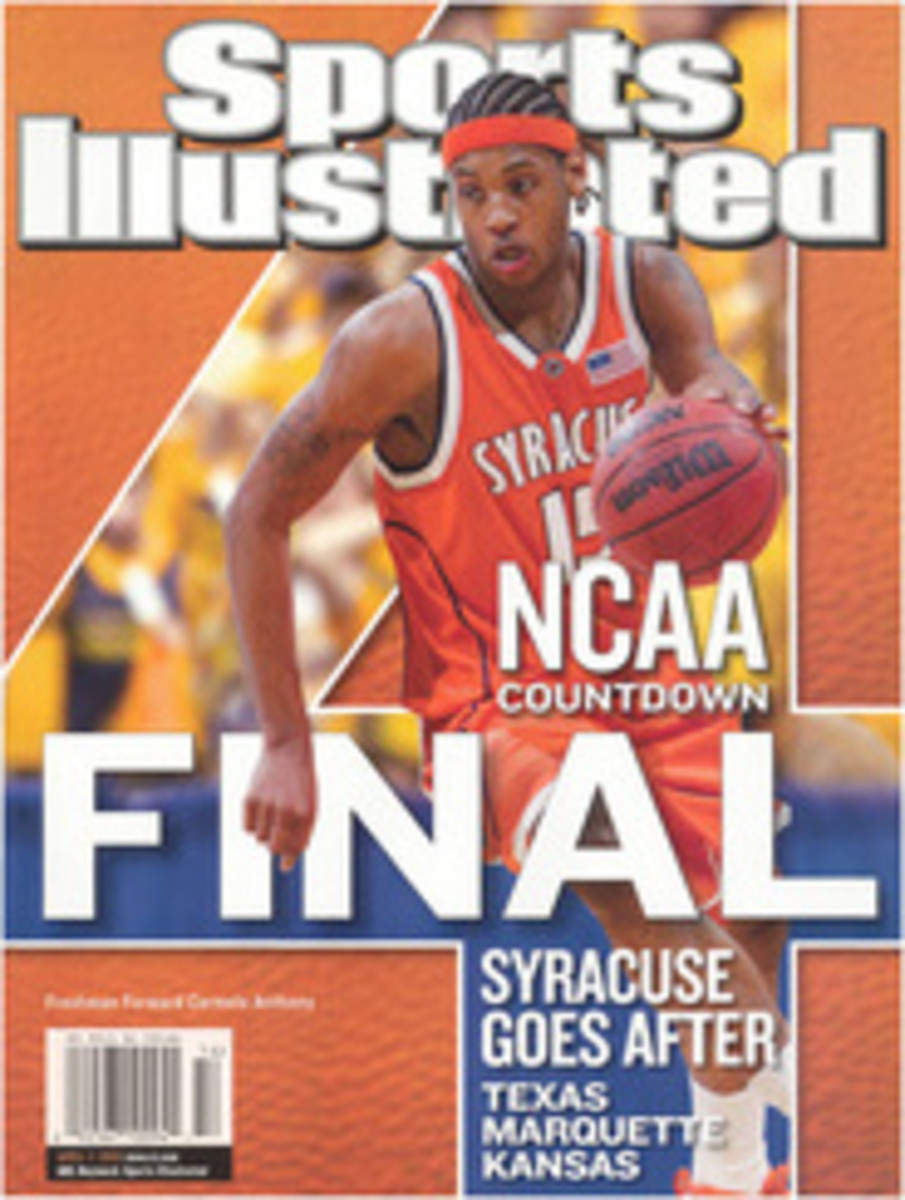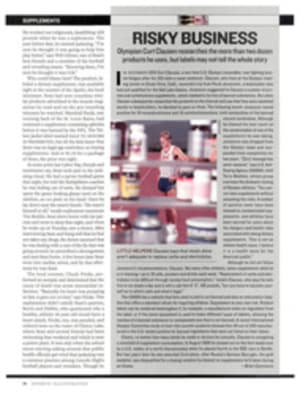
Risky Business Olympian Curt Clausen researches the more than two dozen products he uses, but labels may not tell the whole story
In December 2001 Curt Clausen, a two-time U.S. Olympic
racewalker, was fighting muscle fatigue after his 100-mile-a-week
workouts. Clausen, who lives at the Olympic training center in
Chula Vista, Calif., received a tip from Pavle Jovanovic, a
bobsledder who had just qualified for the Salt Lake Games.
Jovanovic suggested to Clausen a number of protein and
carbohydrate supplements, which claimed to be free of banned
substances. But when Clausen subsequently researched the products
on the Internet and saw that they were marketed mostly to
bodybuilders, he decided to pass on them. The following month
Jovanovic tested positive for 19-norandrosterone and
19-noretiocholanolone, both metabolites of the banned steroid
nandrolone. Although he blamed the test result on the
contamination of one of the supplements he was taking, Jovanovic
was dropped from the Olympic team and suspended from competition
for two years. "[Our] message has never wavered," says U.S.
Anti-Doping Agency (USADA) chief Terry Madden, whose group
oversees the domestic testing of Olympic athletes. "You cannot
take supplements without assuming the risks. A number of positive
tests have been blamed on contaminated supplements, and athletes
have been warned for years about the dangers and health risks
associated with taking dietary supplements. This is not an
athlete health issue. I believe it is a health issue for the
American public."
Although he did not follow Jovanovic's recommendations, Clausen,
like many other athletes, takes supplements while he is in
training--up to 30 pills, powders and drinks each week.
"Replacement of carbs and electrolytes is too difficult through
normal food consumption," insists Clausen, who says he eats five
or six meals a day and is still a rail-thin 6'2", 165 pounds,
"but you have to educate yourself as to what's safe and what's
legal."
The USADA has a website that lists what is and is not banned and
also an information help-line that offers a standard refrain for
inquiring athletes: Supplement at your own risk. Product labels
can be rendered meaningless if, for example, a manufacturer omits
an ingredient from the label, or if the same equipment is used to
make different types of tablets, allowing the residue of a banned
substance to contaminate one that is not banned. A recent
International Olympic Committee study of over-the-counter
products showed that 45 out of 240 manufactured in the U.S.
tested positive for banned ingredients that were not listed on
their labels.
Clearly, no matter how many labels he reads or doctors he
consults, Clausen is navigating a minefield of supplement
consumption. In August 1999 he missed out on the first medal ever
by a U.S. walker at a world championship when he placed fourth in
the 50K race in Seville. But two years later he was awarded third
place, after Russia's German Skurygin, the gold medalist, was
disqualified for a doping violation he blamed on supplements he'd
taken during an illness. --Brian Cazeneuve
COLOR PHOTO: ROBERT BECKLITTLE HELPERS Clausen says that meals alone aren't adequate to replace carbs and electrolytes.

